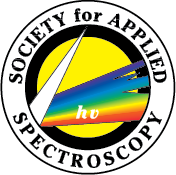More information from forensic evidence: using Laser-Induced Breakdown Spectroscopy to reveal their elemental fingerprint
Pr. Matthieu Baudelet
Abstract: Forensic evidence analysis requires many approaches, including chemical analysis. Molecular analysis is still dominating the field, but elemental composition is very important for the analysis of evidence such as gunshot residues or glass. Techniques such as X-Ray spectroscopy (usually EDX or XRF), absorption methods (graphite furnace AAS) or Inductively Coupled Plasma (ICP-OES or -MS) are used. Laser-ablation based approaches have started a revolution with Laser-Ablation ICP-MS (LA-ICP-MS) and Laser-Induced Breakdown Spectroscopy (LIBS).
In this talk we will discuss the application of elemental analysis, more especially laser-ablation-based, for the analysis of tire evidence as well as forensic anthropology. The elemental analysis of tire rubber has been introduced very recently to classify tires by their brands and I will discuss the extent of how elemental analysis can change the field of tire evidence.
Forensic anthropology has relied for many years on XRF (especially portable XRF) to analyze bones and teeth in the field. The introduction of user-friendly portable LIBS instruments is revolutionizing the field and we show how elemental profiles can be used to potentially solve the challenge of commingled remains.
Bio: Matthieu BAUDELET graduated with a B.Sc. in Physics in the University of Lille (France) in 2003, starting his experience in Spectroscopy with Fourier-Transform Microwave Spectroscopy. In 2005, he graduated with a M.Sc. in "Laser and Spectroscopy" in the University of Lyon (France) and continued to complete his Ph.D. in the 'Laboratoire de Spectrométrie Ionique et Moléculaire' (Lasim, Lyon) working on "Laser-induced plasma and spectroscopic analysis" under the direction of Pr. Jin Yu. He showed the advantages of LIBS for biological sensing and food monitoring and wrote publications on the use of femtosecond pulses to improve this technique and the development of analytical techniques to understand and extract the maximum of information from the LIBS spectrum of bacteria. From 2008 to 2015, as a Senior Scientist and then Assistant Research Professor of Optics in the Laser & Plasma Laboratory in the Townes Laser Institute, he was introducing and developing laser spectroscopy for atomic spectroscopy as well as electronic, vibrational, and rotational molecular spectroscopy for studying fundamentals of plasmas, quantitative analysis and sensing in tabletop and integrated configuration as well as for stand-off detection. Now Associate Professor in the Chemistry department and the National Center for Forensic Science at the University of Central Florida, his research focuses on the application of spectroscopic techniques for forensic analysis. He is focusing on tire analysis, forensic palynology and anthropology. He also develops matrix-matched analytical standards of hard biomaterials for laser-ablation techniques. His teaching assignments are focusing on spectroscopy and microscopy for forensic analysis.
